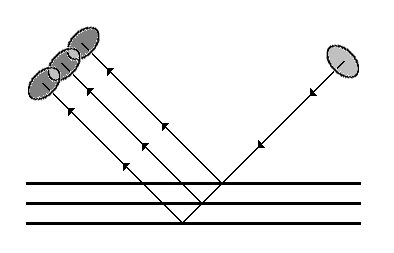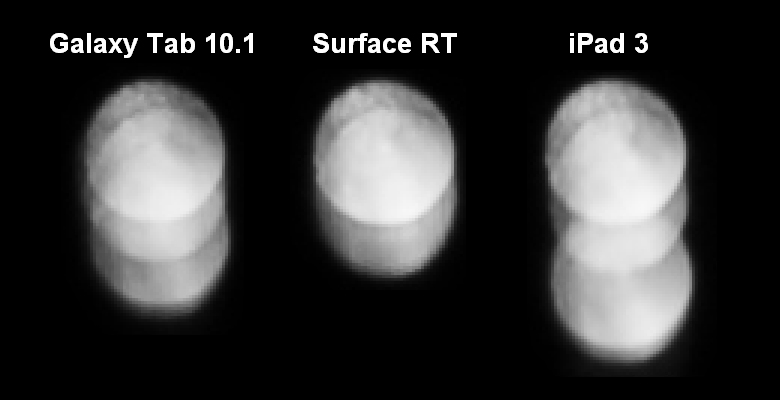Mirror (specular) reflections from display screens can be very annoying because they are superimposed images that compete with the LCD image. Plus the eye automatically tries to focus on the distant reflected images instead of the LCD. Both of these effects cause eye strain. Because the screens are made up of multiple layers of glass and plastic they actually produce multiple reflections from light bouncing off each of the different layers.
To examine the reflections we bounced a tiny 3mm in diameter highly collimated pencil beam of light at 45 degrees to the screen and photographed the reflected beams, which appear as overlapping circles in the photos below. This lets us identify and measure the different layers within the screens. Highly magnified photos from each Tablet are shown below together with a simplified diagram that outlines how it works. Each display has 3 prominent reflections. The top circle is from the top layer of the cover glass. Each subsequent layer produces an additional reflected circle.
The Surface RT and the Galaxy Tab 10.1 both have their Cover Glass bonded
directly to the LCD so there is no Air Gap like on the iPad 3,
which has 3 widely separated reflections.
The Surface RT also has 3 prominent reflections,
but the bottom 2 are very close together indicating a very thin optical stack
on top of the LCD.
The lack of an Air Gap helps to reduce the Reflectance for Ambient Light.

